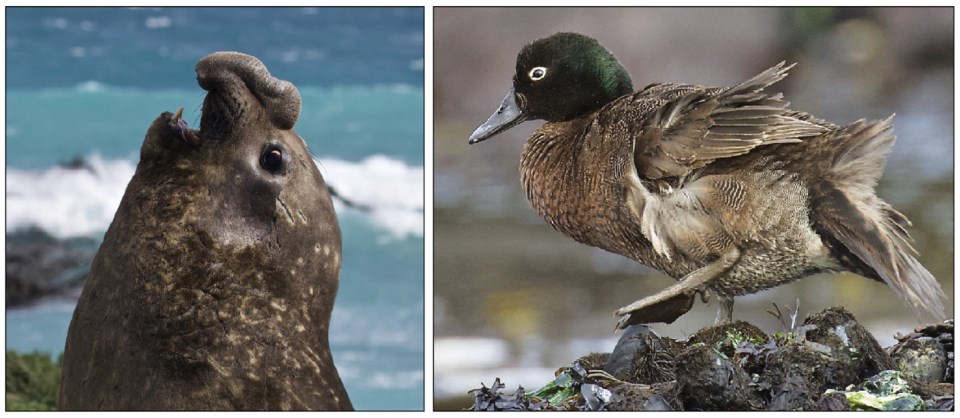Join Rand Rudland at the Sunshine Coast Natural History Society meeting on Friday, March 6 for an illustrated presentation that will take you to the Southern Ocean in the Roaring Forties and Furious Fifties.
Rudland will recount a three-week ocean adventure from Invercargill, New Zealand, as far south as Macquarie Island (which is actually a UNESCO World Heritage Site in Australian waters), and as far east as the Chatham Islands in search of rare mammals and birds, many of which can only be found by taking ships such as the Spirit of Enderby and heading due south.
Flightless teal, unique to remote locations like the Auckland and Campbell islands, have lost the need to fly, and in so doing have nearly lost their wings entirely.
Rails, tomtits, pipits and parrots from these islands are also separate species or subspecies, evolving from their common ancestors over millennia.
Shags – or cormorants to North Americans – like the Campbell Island shag have evolved a new species for each island group.
Eleven species of albatross and 10 of the world’s 17 species of penguins were seen, as well as multiple sightings of the taiko, or magenta petrel, considered one of the rarest seabirds in the world, and certainly one of the most difficult to find in the stormy seas around the Chatham Islands.
Orcas and leopard seals present a formidable cadre of predators for the multitude of penguins needing to forage afar and return to feed their chicks. Hooker’s sea lions and southern elephant seals adorn the beaches in good numbers.
Not to be outdone, the flora of these remote islands has also evolved, as each island visited presents rare opportunities to encounter endemics like the so-called mega-herbs of the Subantarctic. Adaptations to cold have resulted in similar heat conservation features as seen in Arctic plants.
The Snares, The Antipodes, Pitt Island, Bounty Islands, Mangere Island, The Pyramid, and many hours of open ocean made this a trip of a lifetime.
Rand Rudland is a Sunshine Coast physician and wildlife enthusiast who lives in Halfmoon Bay, with his wife Elise. He likes to travel and is an accomplished photographer.
“New Zealand’s Subantarctic Islands” will start at 7:30 p.m. on March 6 at the Sunshine Coast Arts Centre at Medusa and Trail in Sechelt.
Coffee and cookies will be served. Visitors welcomed.
– Submitted by Russ Tkachuk



